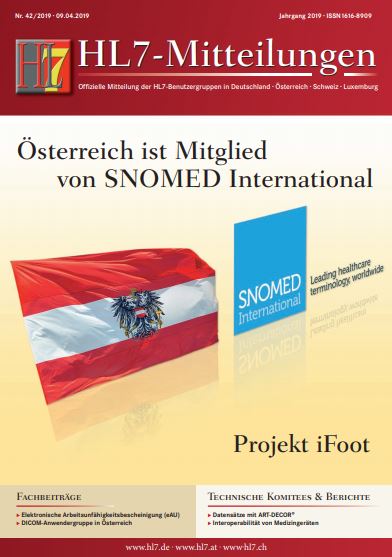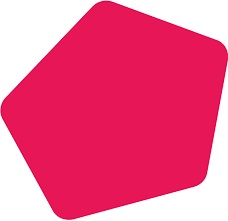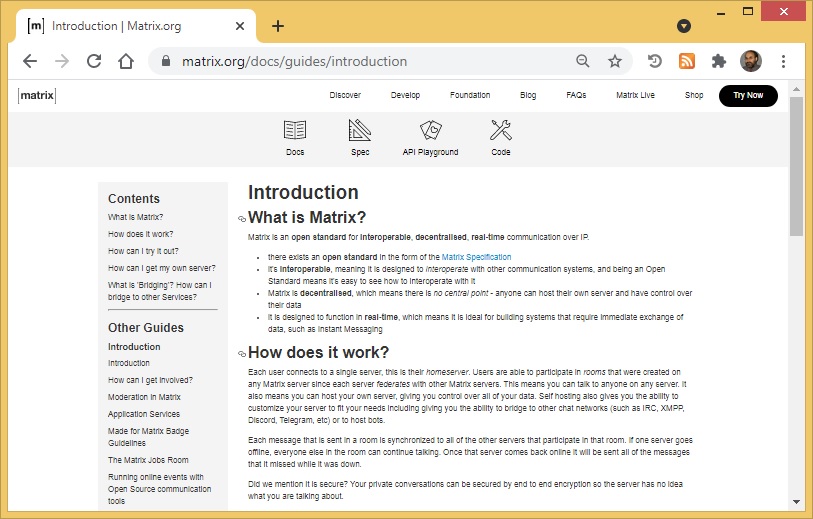Archive for the ‘HL7 / IHE / FHIR’ Category
gematik Fachportal – sekundenschnell zum Wohle der Patienten der TI Messenger basiert auf dem Open Source Kommunikationsprotokoll der Matrix.org Foundation
Mittwoch, August 4th, 2021gematik GmbH – wie der TI Messenger funktioniert und welche Vorteile er mit sich bringt
Mittwoch, August 4th, 2021Docker – Mirth Connect Server contains the back-end for the management interface and the integration HL7 engine component which performs message filtering transformation and transmission
Sonntag, Februar 7th, 2021Mirth Connect Server – contains the back-end for the management interface and the integration HL7 engine component which performs message filtering transformation and transmission
# docker pull brandonstevens/mirth-connect

Raspberry Pi – install docker.io & network in a deep dive mode on Ubuntu Server 20.10
Sonntag, Januar 31st, 2021# apt-get update -y
# apt-get full-upgrade -y
# hostnamectl set-hostname rpi-iot-jsho-tools-02
# lsb_release -a
No LSB modules are available.
Distributor ID: Ubuntu
Description: Ubuntu 20.10
Release: 20.10
Codename: groovy
# apt-get install docker.io
# systemctl enable –now docker
# docker –version
Docker version 19.03.13, build 4484c46
# docker run hello-world
Unable to find image ‚hello-world:latest‘ locally
latest: Pulling from library/hello-world
256ab8fe8778: Pull complete
Digest: sha256:31b9c7d48790f0d8c50ab433d9c3b7e17666d6993084c002c2ff1ca09b96391d
Status: Downloaded newer image for hello-world:latest
Hello from Docker!
This message shows that your installation appears to be working correctly.
To generate this message, Docker took the following steps:
1. The Docker client contacted the Docker daemon.
2. The Docker daemon pulled the „hello-world“ image from the Docker Hub.
(arm64v8)
3. The Docker daemon created a new container from that image which runs the
executable that produces the output you are currently reading.
4. The Docker daemon streamed that output to the Docker client, which sent it
to your terminal.
To try something more ambitious, you can run an Ubuntu container with:
$ docker run -it ubuntu bash
Share images, automate workflows, and more with a free Docker ID:
https://hub.docker.com/
For more examples and ideas, visit:
https://docs.docker.com/get-started/
# apt-get install net-tools
Reading package lists… Done
Building dependency tree
Reading state information… Done
The following NEW packages will be installed:
net-tools
0 upgraded, 1 newly installed, 0 to remove and 0 not upgraded.
Need to get 190 kB of archives.
After this operation, 831 kB of additional disk space will be used.
Get:1 http://ports.ubuntu.com/ubuntu-ports groovy/main arm64 net-tools arm64 1.60+git20180626.aebd88e-1ubuntu2 [190 kB]
Fetched 190 kB in 0s (581 kB/s)
Selecting previously unselected package net-tools.
(Reading database … 102236 files and directories currently installed.)
Preparing to unpack …/net-tools_1.60+git20180626.aebd88e-1ubuntu2_arm64.deb …
Unpacking net-tools (1.60+git20180626.aebd88e-1ubuntu2) …
Setting up net-tools (1.60+git20180626.aebd88e-1ubuntu2) …
Processing triggers for man-db (2.9.3-2) …
# ifconfig
docker0: flags=4099<UP,BROADCAST,MULTICAST> mtu 1500
inet 172.17.0.1 netmask 255.255.0.0 broadcast 172.17.255.255
inet6 fe80::42:70ff:fe71:23cc prefixlen 64 scopeid 0x20<link>
ether 02:42:70:71:23:cc txqueuelen 0 (Ethernet)
RX packets 0 bytes 0 (0.0 B)
RX errors 0 dropped 0 overruns 0 frame 0
TX packets 2 bytes 220 (220.0 B)
TX errors 0 dropped 0 overruns 0 carrier 0 collisions 0
eth0: flags=4163<UP,BROADCAST,RUNNING,MULTICAST> mtu 1500
inet 192.168.1.141 netmask 255.255.255.0 broadcast 192.168.1.255
inet6 2003:d4:c739:7b00:dea6:32ff:fe59:3fcc prefixlen 64 scopeid 0x0<global>
inet6 fe80::dea6:32ff:fe59:3fcc prefixlen 64 scopeid 0x20<link>
ether dc:a6:32:59:3f:cc txqueuelen 1000 (Ethernet)
RX packets 48604 bytes 54391330 (54.3 MB)
RX errors 0 dropped 1736 overruns 0 frame 0
TX packets 12141 bytes 1158378 (1.1 MB)
TX errors 0 dropped 0 overruns 0 carrier 0 collisions 0
lo: flags=73<UP,LOOPBACK,RUNNING> mtu 65536
inet 127.0.0.1 netmask 255.0.0.0
inet6 ::1 prefixlen 128 scopeid 0x10<host>
loop txqueuelen 1000 (Local Loopback)
RX packets 136 bytes 11496 (11.4 KB)
RX errors 0 dropped 0 overruns 0 frame 0
TX packets 136 bytes 11496 (11.4 KB)
TX errors 0 dropped 0 overruns 0 carrier 0 collisions 0
# docker network ls
NETWORK ID NAME DRIVER SCOPE
b772d441d3cf bridge bridge local
a4f5207ad27d host host local
84d120f5b7b0 none null local
(–rm) Clean up
(-it ) For interactive processes (like a shell) you must use -i -t together
in order to allocate a tty for the container process
(–name) Name
# docker run –rm -it –name one –hostname iot-jsho-docker-01 ubuntu /bin/bash
root@iot-jsho-docker-01:/#
# docker network inspect bridge
[
{
„Name“: „bridge“,
„Id“: „b772d441d3cf33324d6d3032cc9c4243e703b749944f3c245f5d6253cac2e8fa“,
„Created“: „2021-01-30T13:56:43.857160155Z“,
„Scope“: „local“,
„Driver“: „bridge“,
„EnableIPv6“: false,
„IPAM“: {
„Driver“: „default“,
„Options“: null,
„Config“: [
{
„Subnet“: „172.17.0.0/16“
}
]
},
„Internal“: false,
„Attachable“: false,
„Ingress“: false,
„ConfigFrom“: {
„Network“: „“
},
„ConfigOnly“: false,
„Containers“: {},
„Options“: {
„com.docker.network.bridge.default_bridge“: „true“,
„com.docker.network.bridge.enable_icc“: „true“,
„com.docker.network.bridge.enable_ip_masquerade“: „true“,
„com.docker.network.bridge.host_binding_ipv4“: „0.0.0.0“,
„com.docker.network.bridge.name“: „docker0“,
„com.docker.network.driver.mtu“: „1500“
},
„Labels“: {}
}
# docker network create jsho-docker –subnet=10.0.0.0/8
48185ed15c92be9fd7ae0df3d1a986d480cfd2644ee9e68f21ac6e863ca4ac4b
# ifconfig
br-48185ed15c92: flags=4099<UP,BROADCAST,MULTICAST> mtu 1500
inet 10.0.0.1 netmask 255.0.0.0 broadcast 10.255.255.255
ether 02:42:48:9d:6c:e3 txqueuelen 0 (Ethernet)
RX packets 0 bytes 0 (0.0 B)
RX errors 0 dropped 0 overruns 0 frame 0
TX packets 0 bytes 0 (0.0 B)
TX errors 0 dropped 0 overruns 0 carrier 0 collisions 0
docker0: flags=4099<UP,BROADCAST,MULTICAST> mtu 1500
inet 172.17.0.1 netmask 255.255.0.0 broadcast 172.17.255.255
inet6 fe80::42:70ff:fe71:23cc prefixlen 64 scopeid 0x20<link>
ether 02:42:70:71:23:cc txqueuelen 0 (Ethernet)
RX packets 6963 bytes 375349 (375.3 KB)
RX errors 0 dropped 0 overruns 0 frame 0
TX packets 14409 bytes 21774962 (21.7 MB)
TX errors 0 dropped 0 overruns 0 carrier 0 collisions 0
eth0: flags=4163<UP,BROADCAST,RUNNING,MULTICAST> mtu 1500
inet 192.168.1.141 netmask 255.255.255.0 broadcast 192.168.1.255
inet6 2003:d4:c703:9e00:dea6:32ff:fe59:3fcc prefixlen 64 scopeid 0x0<global>
inet6 fe80::dea6:32ff:fe59:3fcc prefixlen 64 scopeid 0x20<link>
ether dc:a6:32:59:3f:cc txqueuelen 1000 (Ethernet)
RX packets 631767 bytes 226948523 (226.9 MB)
RX errors 0 dropped 79612 overruns 0 frame 0
TX packets 52804 bytes 4512153 (4.5 MB)
TX errors 0 dropped 0 overruns 0 carrier 0 collisions 0
lo: flags=73<UP,LOOPBACK,RUNNING> mtu 65536
inet 127.0.0.1 netmask 255.0.0.0
inet6 ::1 prefixlen 128 scopeid 0x10<host>
loop txqueuelen 1000 (Local Loopback)
RX packets 226 bytes 20482 (20.4 KB)
RX errors 0 dropped 0 overruns 0 frame 0
TX packets 226 bytes 20482 (20.4 KB)
TX errors 0 dropped 0 overruns 0 carrier 0 collisions 0
# docker network ls
NETWORK ID NAME DRIVER SCOPE
b772d441d3cf bridge bridge local
a4f5207ad27d host host local
48185ed15c92 jsho-docker bridge local
84d120f5b7b0 none null local
# docker network inspect jsho-docker
[
{
„Name“: „jsho-docker“,
„Id“: „48185ed15c92be9fd7ae0df3d1a986d480cfd2644ee9e68f21ac6e863ca4ac4b“,
„Created“: „2021-01-31T11:50:55.199543038Z“,
„Scope“: „local“,
„Driver“: „bridge“,
„EnableIPv6“: false,
„IPAM“: {
„Driver“: „default“,
„Options“: {},
„Config“: [
{
„Subnet“: „10.0.0.0/8“
}
]
},
„Internal“: false,
„Attachable“: false,
„Ingress“: false,
„ConfigFrom“: {
„Network“: „“
},
„ConfigOnly“: false,
„Containers“: {},
„Options“: {},
„Labels“: {}
}
]
# docker run –rm -it –name two –net jsho-docker –hostname iot-jsho-docker-02 ubuntu /bin/bash
root@iot-jsho-docker-02:/#
# docker network connect bridge two
Introduction to HL7 and Interfaces in Healthcare
Freitag, Mai 1st, 2020HL7 SIU messages – notifies an auxiliary application of changes to some facet of the filler application’s appointment schedule
Sonntag, März 29th, 2020The fourteen SIU messages include
SIU-S12 – Notification of new appointment booking
SIU-S13 – Notification of appointment rescheduling
SIU-S14 – Notification of appointment modification
SIU-S15 – Notification of appointment cancellation
SIU-S16 – Notification of appointment discontinuation
SIU-S17 – Notification of appointment deletion
SIU-S18 – Notification of addition of service/resource on appointment
SIU-S19 – Notification of modification of service/resource on appointment
SIU-S20 – Notification of cancellation of service/resource on appointment
SIU-S21 – Notification of discontinuation of service/resource on appointment
SIU-S22 – Notification of deletion of service/resource on appointment
SIU-S23 – Notification of blocked schedule time slot(s)
SIU-S24 – Notification of opened (“un-blocked”) schedule time slot(s)
SIU-S26 – Notification that patient did not show up for scheduled appointment
and the SIU-S14 message would look like this
MSH|^~\&|GPMS|CTX||MED2000|200803060953||SIU^S14|20080306953450|P|2.3||||||||
SCH|00331839401|||||58||HLCK^HEALTHCHECK ANY AGE|20|MIN|^^^200803061000
|||||JOHN||||VALERIE|||||ARRIVED|
PID|1||489671|0|SMITH^MICHAEL^||20080205|F|||176215TH STREET^HOUSTON^TX^77306||(832)795-
8259|||S|||999999999||||||||||||
PV1|1|O|||||HHR^NGUYENSUSAN MD|^||||||||||||||||||||||||||||||||||| ||||||||||
RGS|1|||
AIL|1||HHR^FPCS NGUYEN, MD||||||||||
NTE|1||1MONTH HLCK^^|
AIP|1||PBN^LISAPORTER|50|||||||||

FHIR Release 4 v4.0.1 – are also now normative, including the RESTful API, the XML and JSON formats, the terminology layer, the conformance framework as well as Patient and Observation resources
Dienstag, Januar 28th, 2020The JSON representation for a resource is based on the JSON format described in STD 90 (RFC 8259) and is described using this format
{
„resourceType“ : „[Resource Type]“,
// from Source: property0
„property1“ : „<[primitive]>“, // short description
„property2“ : { [Data Type] }, // short description
„property3“ : { // Short Description
„propertyA“ : { CodeableConcept }, // Short Description (Example)
},
„property4“ : [{ // Short Description
„propertyB“ : { Reference(ResourceType) } // R! Short Description
}]
}
HL7-Mitteilungen Aktuelle Ausgabe Nr. 43/2019
Donnerstag, Oktober 24th, 2019HL7-Mitteilungen Aktuelle Ausgabe Nr. 42/2019
Montag, Oktober 14th, 2019
HL7 Analyst 1.0 – allows users to view, edit, and save Version 2.x HL7 messages
Freitag, August 2nd, 2019HL7 Analyst – allows users to view, edit, and save Version 2.x HL7 messages you’ll never have to count pipe characters in notepad again
samedi HL7-Gateway – vernetzt das Gesundheitswesen und optimiert medizinische Arbeitsabläufe und Prozesse. Einfach, effizient und sicher
Donnerstag, August 1st, 2019 samedi HL7-Gateway – Anforderungen und Leistungsbeschreibung
samedi HL7-Gateway – Anforderungen und Leistungsbeschreibung
HL7 Inspector Neo 1.2.1.168-Final – is a simple small online HL7 message editor
Samstag, Juli 27th, 2019The HL7 Inspector NEO – is a useful hl7 tool for integration the HL7 in a health care environmental




